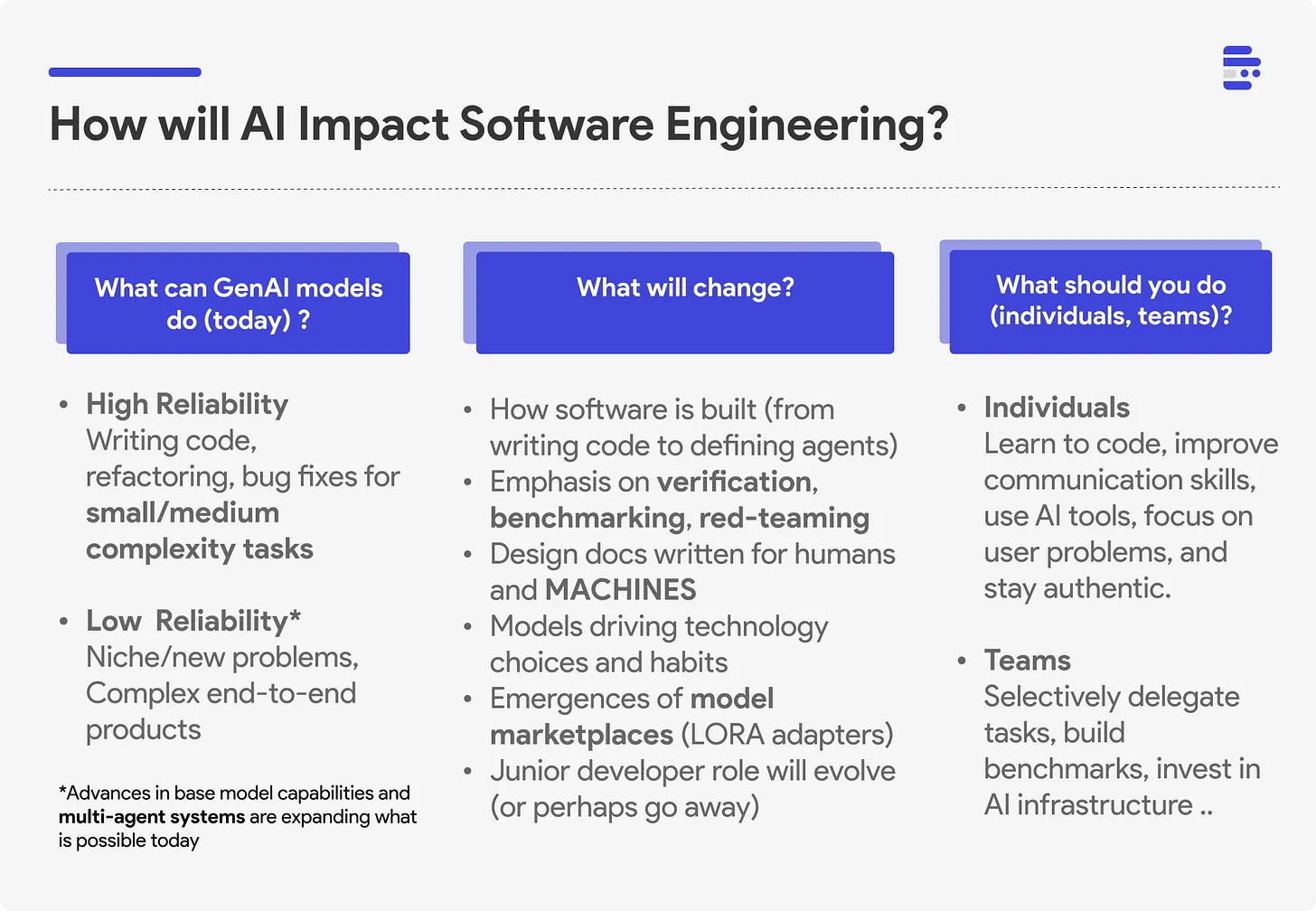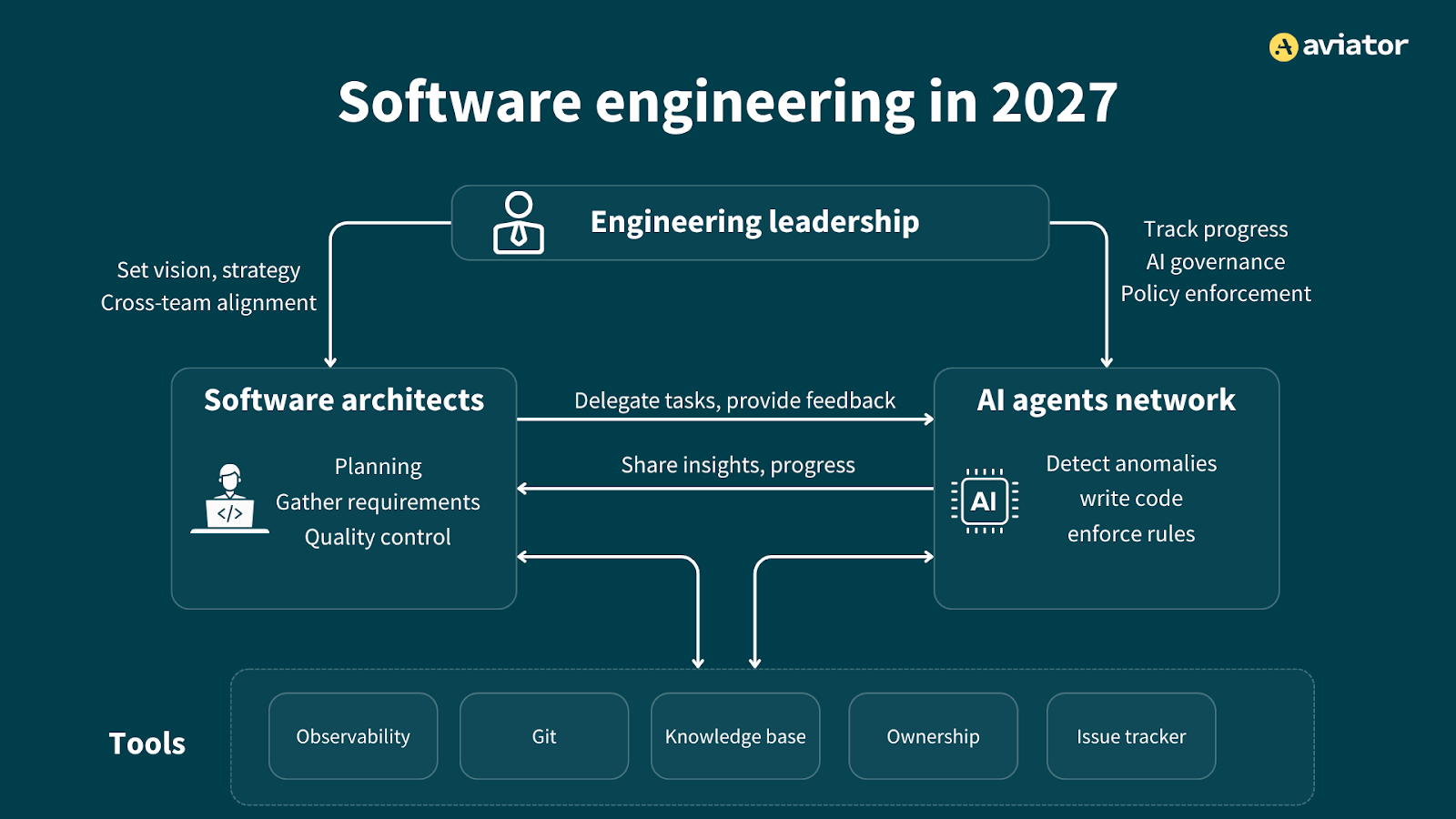© 2025 Alltius Inc
Every major shift in technology comes with a moment of existential anxiety.
If you follow the headlines, it’s easy to believe replacement is inevitable. After all, generative AI tools are already writing code, drafting architectures, and even debugging complex systems.
But the reality is much more nuanced. AI won’t simply replace these roles — it will transform them. Just as the Industrial Revolution didn’t eliminate engineers but created entirely new disciplines, the AI revolution is giving rise to new forms of engineering and architecture designed for the unique challenges of this era.
At the center of this transformation is a new role: the Forward Deployed AI Engineer (FDAIE).
Before we understand the AI version, let’s rewind.
The concept of a Forward Deployed Engineer (FDE) was popularized by Palantir. Unlike traditional engineers who remained product-side, FDEs embedded directly with customers solving real-world problems in the field. Their mandate was to ensure that complex software platforms didn’t just exist as tools, but actually generated mission-critical outcomes.
This model proved powerful. By bridging the gap between product and customer problem-solving, FDEs became central to Palantir’s ability to transform big data into actionable intelligence for governments, enterprises, and financial institutions.
But today’s challenges go beyond big data. They sit squarely in the domain of generative AI architecture.
Deploying generative AI is fundamentally different from deploying traditional software. Enterprises are not just installing platforms or customizing dashboards. They are:
This last challenge is critical. According to Gartner, nearly 40% of AI projects never make it into production. The result? Executives are left questioning whether their AI investments will ever cross the “last mile” into real business outcomes.
That’s where Forward Deployed AI Engineers step in.

To appreciate the evolution, consider the differences:
FDAIEs don’t just build software — they:
In short, while FDEs were architects of software outcomes, FDAIEs are architects of AI intelligence outcomes.
From LLMs and generative AI to symbolic AI and multi-agent orchestration.
Fluency in APIs, cloud-native infrastructure, and complex workflow orchestration.
Comfort with structured/unstructured data at scale, combined with a deep understanding of regulatory frameworks (GDPR, HIPAA, PCI-DSS, etc.).
Ability to translate vague executive priorities into tangible, trusted AI workflows.
Consulting mindset, solution co-design, and communication clarity.
A relentless focus on crossing from proof-of-concept (PoC) into production, with ROI as the north star.
Where traditional engineers focus on shipping code, FDAIEs focus on shipping outcomes.
We’re at a pivotal moment in enterprise AI adoption.
This gap between AI potential and AI reality is widening. Boardrooms are no longer satisfied with demos. They want AI projects to deliver trusted, compliant, and production-grade outcomes.
FDAIEs are the missing link — the bridge between hype and results.
The rise of AI raises existential questions beyond engineering. Will architects be replaced by AI?
Here’s the truth: AI won’t eliminate architecture, but it will redefine it.
Instead of static blueprints and rigid workflows, the future of AI architecture in enterprises will be:
In this future, FDAIEs play the role of architects of intelligence — ensuring that generative AI architectures are trusted, compliant, and business-aligned.
The demand for FDAIEs isn’t just theoretical — it’s massive.
This creates a multi-billion-dollar talent opportunity: engineers who can bridge AI research and enterprise adoption.
Just as Forward Deployed Engineers became synonymous with the big data revolution, Forward Deployed AI Engineers will become synonymous with the AI revolution.
At Alltius, we are not just observing this trend — we are pioneering it. Our work with leading insurers and financial institutions has already shown how FDAIEs can help enterprises move beyond pilots and into trusted, production-grade AI outcomes.

The debate over “When will AI replace programmers?” or “Will AI replace engineers entirely?” is a distraction.
History already gave us the answer.
Think about it:
Every wave of technology has sparked the same fear. And every time, the reality has been transformation, not elimination.
AI is no different. In fact, it’s the most powerful amplifier yet — shifting human roles into hybrid forms that didn’t exist before.
The future of engineering won’t be about who can code the fastest. It will be about who can:
That’s the DNA of the Forward Deployed AI Engineer (FDAIE).
Just as Forward Deployed Engineers became the backbone of the big data revolution, FDAIEs will be the backbone of the generative AI era.
They will sit at the intersection of technology, regulation, and business bridging the last mile between AI potential and enterprise impact.
Because the real story isn’t about AI replacing humans.
It’s about humans and AI collaboration building together, smarter and faster than ever before.
The debate over “Will AI replace engineers?” or “Will architects be replaced by AI?” often misses the point. AI won’t erase these roles — it will elevate and transform them.
Just as Forward Deployed Engineers were the backbone of the big data revolution, Forward Deployed AI Engineers (FDAIEs) will be the defining role of the generative AI era. They will bridge the last mile between AI potential and business outcomes — ensuring trust, compliance, and ROI in every deployment.
The future of enterprise AI will not be determined by how powerful models become, but by how effectively organizations can turn those models into production-grade, value-driving systems. FDAIEs are the architects of that future.
At Alltius, we are pioneering this discipline — embedding FDAIEs with enterprises to move beyond flashy demos into real, measurable business impact.
The AI gap isn’t about technology — it’s about execution.
Alltius embeds Forward Deployed AI Engineers within enterprises to close that gap — ensuring compliance, trust, and measurable ROI.
📩 Connect with us or Start a free trial to explore how we can accelerate your AI adoption journey.
Try Free AI Tools by Alltius Now!
Make life easier for your customers, agents & yourself with Alltius' all-in-one-agentic AI platform!
See how it works >>
Book a 30-minute demo & explore how our agentic AI can automate your workflows and boost profitability.


